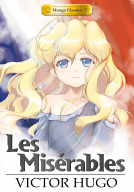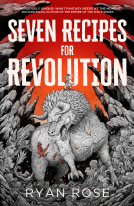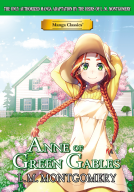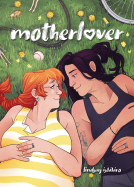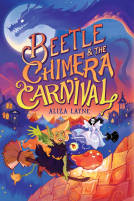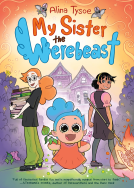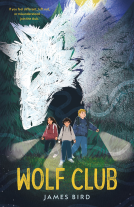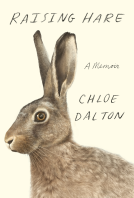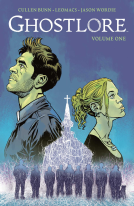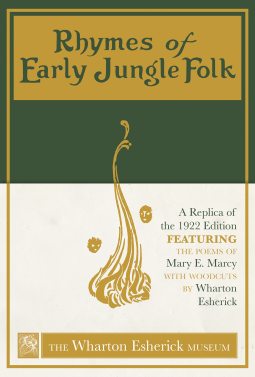
Rhymes of Early Jungle Folk
A Replica of the 1922 Edition Featuring the Poems of Mary E. Marcy with Woodcuts by Wharton Esherick
by The Wharton Esherick Museum , Mary E. Marcy, Wharton Esherick
This title was previously available on NetGalley and is now archived.
Send NetGalley books directly to your Kindle or Kindle app
1
To read on a Kindle or Kindle app, please add kindle@netgalley.com as an approved email address to receive files in your Amazon account. Click here for step-by-step instructions.
2
Also find your Kindle email address within your Amazon account, and enter it here.
Pub Date Jun 28 2015 | Archive Date Jun 28 2015
Schiffer Publishing Ltd. | Schiffer
Description
This facsimile edition of a 1922 children’s book features seventy-three dynamic and whimsical woodcut illustrations—the first woodcuts that the famed American craftsman Wharton Esherick produced. A high-quality replica authorized by the Wharton Esherick Museum, this book reveals the foundation of Esherick’s direction as an artist. Edited by Museum director Paul Eisenhauer, it also features a foreword by Museum assistant curator Laura Heemer. The illustrations frame verses that introduce children to the principles of evolution, a highly controversial topic at the time: the book was published three years before the famous Scopes “Monkey” trial of 1925 that resulted in the inclusion of the teaching of evolution in public schools. Drawn by the excitement of the controversy, Esherick threw his passion into these illustrations. Afterward he would go on to carve over 300 woodcuts, leading to decorative carving, and ultimately, to Esherick’s realization that he was a sculptor rather than a painter.
Advance Praise
No Advance Praise Available
No Advance Praise Available
Marketing Plan
No Marketing Info Available
No Marketing Info Available
Available Editions
| EDITION | Hardcover |
| ISBN | 9780764349379 |
| PRICE | $19.99 (USD) |
Average rating from 15 members
Featured Reviews
 Christine E, Reviewer
Christine E, Reviewer
Disclaimer: ARC via Netgalley. I also had never heard of either Esherick or Marcy before this book. Apparently there is an Esherick Museum. I want to visit it now.
I hadn’t heard of either the poet Mary E. Marcy or the artist Wharton Esherick before. Quite frankly, I only read this via Netgalley because I am Auto-Approval by the publisher and it looked a little interesting.
I’m glad I did.
First off, if the introduction is anything to go by, Mary E. Marcy was a hell of a woman, who faced some prosecution because of her religious beliefs. In many ways, the book is worth reading simply for the introduction that details her life.
The poetry is rather interesting, and I haven’t quite seen anything like it before. It is children’s poetry, so Shakespeare it really isn’t. But it is not cloying or overly cute. It’s actually about science (or at least science in the early 1920s (the book was published in 1922). This means dinosaurs and geological eras appear in the poetry. There is a poem about how coal is formed – not a myth but the actually scientific process. It’s actually cool, and in many ways is a forerunner of Prachett’s Science of Discworld series.
And it has a poem that honors the thumb!
The illustrations are nice and match the poetry quite well.
The book was a pleasant surprise.
 Meg E, Educator
Meg E, Educator
Gorgeous woodcuts accompany groundbreaking children's poetry from the 1920s. As a historical piece, this work is of significant value. As an art work, this book presents some beautiful prints by Wharton Esherick. As poetry, the work is valuable in its storytelling and basis in scientific fact at a time when these ideas were quite progressive. Nothing about the work is predictable, either. The poem "The Nanny Goat" tells of a hunter who finds a kid with a crushed foot, and carries her to his cave. However, instead of killing and eating her, he makes her comfortable and creates a symbiotic relationship where he uses the goat's milk in exchange for taking care of the kid and keeping her safe and fed. Truly lovely book, and very different from many old teaching texts that I've collected from the era. This is not a "Dick and Jane" style book, as many were back then, but rather a book for children that treats children as intelligent beings. Well done!
 Librarian 250745
Librarian 250745
I went into this blind never having heard of Mary E. Marcy or Wharton Esherick but I read through the entire collection in one sitting, pleasantly surprised by how little the subject matter has dated and how accessible it would be for middle grade children today. The rhymes themselves are both rhythmically pleasing, amusing and scientifically informed. The wood cuts are gorgeous and really add an extra dimension to the story of evolution told via verse. Scientific discovery has moved on since its publication so there are one or two inaccuracies - notably the brontosaurus!- but this is hardly surprising considering how much time has passed since publication. This really is fun. It is a shame that the subject matter caused certain bigoted minds to hold it back so much. In terms of children's verse, it surpasses Robert Louis Stevenson's Children's Garden of Verse. Simply lovely.
 Susan D, Reviewer
Susan D, Reviewer
Mary Marcy produced the original Rhymes of Early Jungle Folk in 1922, a time in which poetry on evolution, prehistoric man and the geological history of the earth was not as acceptable as it would be even 20 years later. But she was a forward thinker and wished to produce a work for children and the adults around them. Whartin Esherick shared her beliefs and goals and created the wonderful woodcuts that illustrate the poems.
Marcy had previously devoted her life to labor causes but had run afoul of various government interdictions, especially during the First World War. Writing this book was her way to move into another path after her and her husband's home and papers were confiscated by the government as part of a program to repress any anti-war movements.
Out of her sadness she created joy. With poems moving from the dinosaurs through geologic change to early man, on to the development of man as a hunter-gatherer and builder, taming fire and horses, Marcy covers virtually all of the plant and animal kingdoms. There are obvious inaccuracies given the fact that this was written almost 100 years ago and increases in knowledge over that time, but the essence is true. There are also occasional notes at a few poems for those adults seeking further clarification, particularly re: Darwin. And there are also snatches of humor, found in snippets or entire poems. One poem is dedicated to "The Thumb." Perhaps my favorite poem of all is "On the Bottom of the Ocean," a lovely view of the teeming life of the sea.
I do recommend this replica edition of poems for adults and to share with whatever children you have at hand. Check it out!
A copy of this book was provided by the publisher through NetGalley in return for an honest review.
